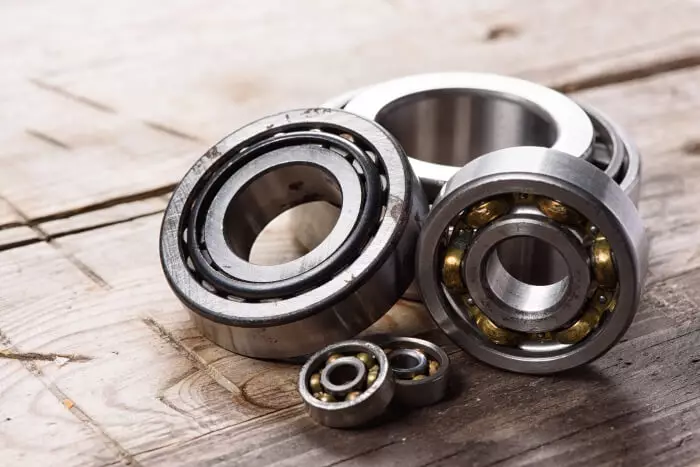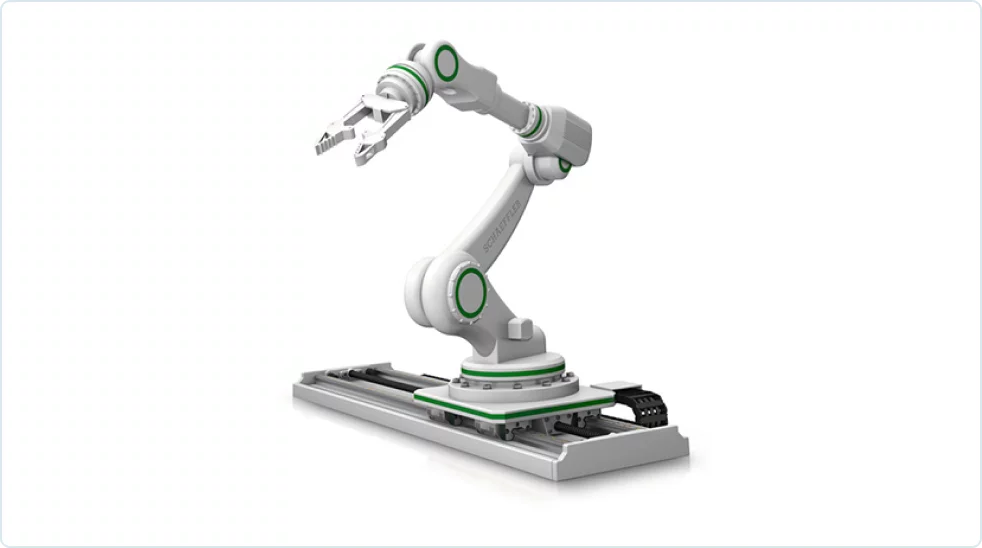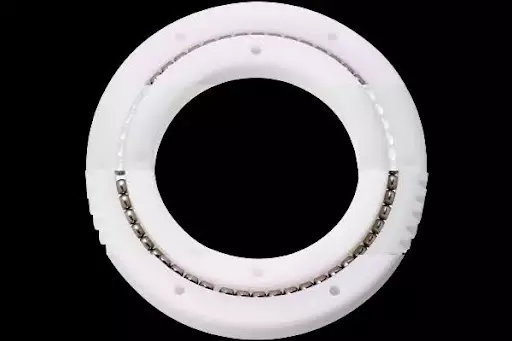
The Ultimate Guide to Self-Lubricating Plastic Slewing Ring Systems
In addition to traditional steel bearing solutions, Pacific International Bearing Sales Inc. (PIB) offers advanced self-lubricating plastic slewing ring systems for high-efficiency, low-maintenance rotating applications. These slewing ring bearings are designed to meet the rigorous demands of modern industries such as robotics, automation, wind energy, medical diagnostics, aerospace, and cleanroom equipment. This article will be an informative technical reference for engineers and decision-makers, detailing the construction, performance, and selection criteria of PIB’s CSB-SRB series slewing ring bearings. The PIB CSB-SRB product line – encompassing the SRB-01, SRB-02, and SRB-03 families – demonstrates how innovative materials and designs can deliver precision and reliability while eliminating the need for external lubrication or frequent maintenance.
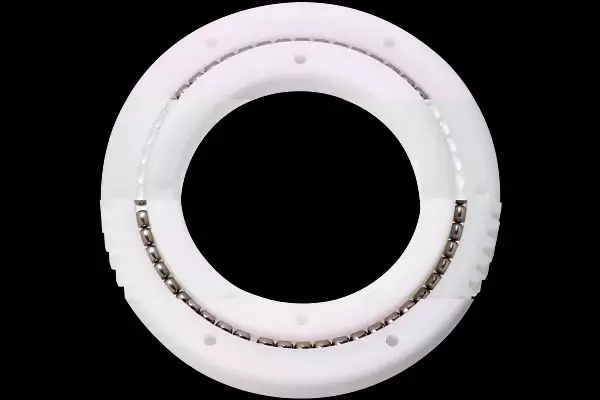
Fig. 1. Ball bearing slewing ring, ball bearing xiros, 100 % free of lubrication, Available completely metal-free, particularly suitable for the food and chemical industry, FDA-compliant components
Contact us for further information www.pibsales.com
Self-Lubricating Plastic Slewing Rings
Traditional slewing ring bearings use rows of balls or rollers and require constant lubrication and sealing to prevent wear and contamination. In contrast, self-lubricating plastic slewing ring bearings use low-friction polymer sliding elements in place of metal rolling elements. The sliding segments are made of advanced engineered plastics that contain solid lubricant, enabling “fit-and-forget” operation without any external grease. This design offers several distinct advantages:
Maintenance-Free Operation: The built-in lubricants continuously lubricate the sliding interface, so no periodic greasing is required. The absence of grease means these bearings will not seize up from dust or dirt and won’t contaminate sensitive environments (no grease leakage or outgassing). They are ideal for cleanrooms, food-grade environments, and applications where oil/grease would pose a problem.
Corrosion Resistance: The bearing rings are typically made from anodized aluminum or stainless steel, and the sliding elements are polymer, so the entire system is highly resistant to corrosion and moisture. The plastic sliding elements and hard-anodized aluminum surfaces have negligible moisture absorption and inherently resist corrosion, often eliminating the need for additional seals or covers even in wash-down or outdoor applications.
Low Noise & Vibration: Sliding slewing rings run extremely quietly – there are no metal rolling elements grinding or rattling. The polymer pads also dampen vibrations better than steel bearings. In tests, sliding-ring designs have shown excellent vibration-damping, remaining intact under conditions that caused ball bearings to fail. This makes them suitable for precision instruments and noise-sensitive equipment.
Weight and Cost Savings: By replacing steel rolling elements and raceways with polymers and lightweight metal alloys, plastic slewing rings are generally lighter and often more cost-effective than large steel roller bearings. They provide adequate performance for moderate loads and speeds at a fraction of the cost of heavy-duty roller slewing rings, making them an attractive alternative in many applications where ultra-high load or ultra-high precision of steel bearings isn’t strictly necessary.
Of course, sliding plastic slewing rings do have some limitations. They typically handle lower maximum speeds and slightly lower peak loads than equivalent-sized ball/roller bearings. For instance, rolling-element slewing rings might achieve 500+ rpm, whereas plastic slewing rings are generally suited for low-to-moderate speeds (often up to a few hundred rpm). In terms of load, plastic slewing rings excel in low to medium load ranges (on the order of tens of kN), but extremely high loads or shock loads may still favor all-steel designs. Nevertheless, for a vast range of applications that do not push these extremes, self-lubricating plastic slewing rings offer a highly reliable, clean, and maintenance-free solution that can dramatically simplify engineering designs.
Key Materials and Design Features
One of the core strengths of the CSB-SRB series is the clever combination of advanced materials, each chosen for a specific role in the bearing’s construction.
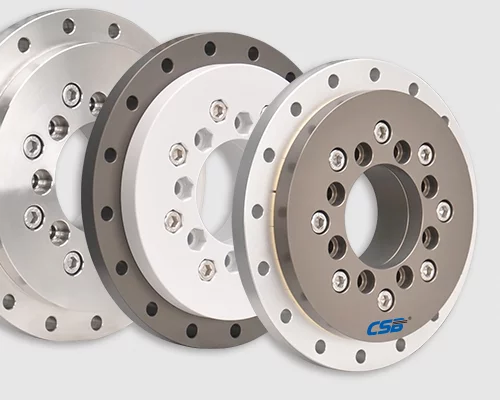
Below, we discuss the major material components and design features common to these slewing rings:
- Bearing Rings: The slewing ring assemblies consist of an inner ring and an outer ring that together form the rotational interface. In CSB-SRB designs, these rings are typically made from high-strength, lightweight anodized aluminum alloy. Aluminum provides a stiff, corrosion-resistant structure without the weight of steel. The hard-anodized surface on the raceway areas increases wear resistance and durability of the rings. For even greater strength or harsher environments, optional stainless steel rings (304 steel) are available on all series. The stainless option is beneficial for marine environments, very high loads, or applications requiring ferrous materials; however, the standard aluminum rings are sufficient for most uses and contribute to weight savings and corrosion resistance.
- Self-Lubricating Polymer Pads: Instead of ball bearings, these slewing rings use polymer sliding pads or a polymer sliding layer to carry loads.
- CSB uses several proprietary plastic compounds for these sliding elements, optimized for different characteristics:
- TEFPLAS® B: A low-friction, wear-resistant composite (PTFE-based) used as the standard sliding pad material in the SRB-01 high-speed series. This material yields a very smooth motion with minimal friction, enabling the high rotational speeds and near-silent operation of SRB-01 bearings.
- TEFPLAS® C: An optional sliding pad material for SRB-01, this variant is electrically conductive (ESD-safe). It is used when the application requires dissipation of static charge, for example, in semiconductor manufacturing equipment or sensitive electronics handling. SRB-01 bearings built with TEFPLAS C pads are designated as an ESD version, offering the same low-friction performance with added electrostatic protection.
- EPB13: A tribologically optimized engineering plastic that serves as the standard sliding pad in the SRB-03 heavy-duty series. EPB13 is formulated for high wear resistance and stable, low friction over a long service life. It can handle high contact pressures, making it suitable for heavy loads. The EPB13 pads ensure smooth, maintenance-free operation even under demanding conditions.
- EPB6: An optional FDA-grade polymer for sliding pads, available in the SRB-03 family. EPB6 has similar self-lubricating properties to EPB13 but is compliant with food and medical equipment standards. Engineers specify EPB6 pads when the slewing ring will be used in food processing, pharmaceutical manufacturing, or other applications that require food-safe or medical-safe materials.
- EPB21: A high-temperature resistant plastic option for sliding pads (SRB-03 series) . This material maintains its mechanical properties and low-friction behavior at elevated temperatures up to about 180 °C. By selecting EPB21 pads, the operating temperature range of the slewing ring can be extended for applications like baking ovens, industrial heaters, or aerospace systems that see higher temperatures.
- MN9: An electrostatic dissipative (ESD) polymer option for the SRB-03 series pads . MN9 pads are used when static electricity must be minimized in a heavy-duty application (for instance, in cleanrooms or explosive environments). This gives SRB-03 bearings an ESD-safe configuration analogous to SRB-01’s TEFPLAS C option, but tailored for the heavy-load series.
- MN70: An engineering polymer used as the material for the inner ring of the SRB-02 series. In the SRB-02 design, rather than using discrete sliding inserts, the entire inner ring itself is made from a low-friction polymer (MN70) that glides against the aluminum outer ring. This simplifies the design and reduces weight and cost, while still providing self-lubricating performance.
- Lubrication and Seals: All CSB-SRB slewing rings are completely dry-running, requiring no oil or grease. The solid lubricants embedded in the sliding elements provide a consistent lubrication film. This not only cuts maintenance overhead but also means there is no need for complex sealing systems to retain lubricant. Traditional slewing bearings often include rubber or felt seals to keep grease in and contaminants out, but in these plastic slewing rings, such seals can be omitted or kept very simple. The polymer liners are inherently resilient against dirt and dust, since there is no liquid grease to attract particles, debris is less likely to accumulate on the sliding surfaces, and any particles that do enter are often tolerated by the bearing with negligible effect. For outdoor or dirty environments, covers or shields can be added as needed, but many applications run these bearings open-air without issue. The elimination of elaborate seals further reduces rotational friction and simplifies the assembly.
- Operating Temperature Range: Thanks to the advanced plastics and optional material configurations, these slewing rings support a broad temperature range. Standard configurations (e.g., EPB13 or TEFPLAS B pads with aluminum rings) typically operate from about -40 °C up to +90 °C continuously. With high-temperature materials like EPB21 (and in some cases using steel rings), the bearings can handle temperatures up to approximately +180 °C to +200 °C. Some special configurations (such as the SRB-02 heavy-duty version with PTFE-based liners and steel rings) can even function in cryogenic conditions down to -196 °C.
Engineers should select the pad material to match the application’s temperature requirements – the flexibility of the CSB-SRB line ensures that even extreme temperature needs can be met with a “drop-in” solution. In summary, the CSB-SRB slewing ring systems leverage a combination of lightweight metal rings and self-lubricating polymer bearing elements to achieve a unique balance of performance: high load capacity, low friction, corrosion resistance, quiet operation, and zero maintenance. With a clear understanding of these materials and design features, we can now explore each product family in detail.
SRB-01 Series – High-Speed, Low-Friction Slewing Rings
The SRB-01 series is CSB’s high-speed, precision slewing ring line. These bearings are designed for applications that demand smooth, rapid rotation with minimal resistance and noise. Typical use cases include robotic joints, indexing tables, lidar scanners, and medical diagnostic equipment – scenarios where the bearing must facilitate fast movements and frequent cycles with reliable accuracy.

Key features of SRB-01 include:
- High Rotational Speed Capability: Thanks to its low-friction design, the SRB-01 can operate at speeds far beyond most sliding bearings. Small-diameter sizes (e.g., 20 mm inner diameter) are rated for up to ~600 rpm continuous rotation, while even the largest SRB-01 units (~100 mm diameter) can reach about 180–200. This high-speed performance is enabled by the TEFPLAS bearing pads and precision-machined rings that minimize drag. Engineers can confidently use SRB-01 bearings in applications with fast indexing or oscillation without worrying about overheating or excessive wear at speed.
- Smooth, Low-Noise Operation: PIB SRB-01 slewing rings exhibit nearly silent running. The TEFPLAS® B sliding pads (standard in this series) provide a smooth operation with no metal-to-metal contact, hence virtually no noise. There is also no rolling element vibration – movements are fluid and vibration-free even at high rotation speeds. This makes SRB-01 ideal for camera gimbals, scanning systems, or precision turntables where vibration or noise would degrade performance.
- Self-Lubricating & Maintenance-Free: Like all CSB-SRB bearings, the SRB-01 is fully self-lubricating. Once installed, it does not require relubrication for life. The solid lubricant within the TEFPLAS pads ensures a constant low-friction interface. Maintenance departments can effectively “install and forget” these bearings – an especially valuable benefit for equipment that is hard to service or that must operate in clean environments where lubricants are undesirable.
- Lightweight, Corrosion-Resistant Rings: The inner and outer rings of SRB-01 are made from high-strength anodized aluminum. This keeps the bearing weight low and eliminates corrosion concerns. The anodized surface is hard and wear-resistant, complementing the polymer pads. If needed for higher load support or harsher conditions, stainless steel rings are available as an option, though at the cost of additional weight. In either case, all materials are rust-proof and suitable for outdoor or washdown environments.
- Optional ESD-Safe Configuration: For electronics manufacturing, semiconductor handling, or other static-sensitive scenarios, the SRB-01 can be built with TEFPLAS® C pads (the ESD variant). These pads safely dissipate static charges while maintaining similar friction and wear characteristics as the standard pads. Combined with the option of stainless steel rings, the TEFPLAS C version (often designated SRB-01-ESD) provides a completely ESD-safe slewing ring solution without sacrificing performance.
- Cleanroom and Vacuum Compatibility: Because SRB-01 bearings contain no grease or oil and generate very low particulate wear, they are suitable for cleanroom use. No outgassing lubricants or particles will contaminate the environment. For instance, in semiconductor wafer handling equipment or medical devices, SRB-01 bearings can meet strict cleanliness requirements. The standard materials operate up to 200 °C, meaning they can also tolerate bake-out procedures or high-temp sterilization if needed.
The SRB-01 series covers inner diameters from ~20 mm up to 100 mm, with corresponding outer diameters from ~80 mm up to ~185 mm. Load capacity is substantial for a “light” bearing – a typical SRB-01 (e.g., 60 mm size) can handle around 18,000 N (≈1.8 tons) static axial load and around 5,000–6,000 N dynamic axial load in operation. (The exact load ratings vary by size; see comparison table below.) These bearings are primarily axial load bearings (supporting thrust loads), but they also tolerate some radial loads and moment loads (overturning moments) for applications like turntables. Proper mounting (usually bolting through the rings) and preloading can be used to eliminate play and increase positional accuracy. Overall, SRB-01 provides an excellent balance of speed, precision, and sufficient load capacity for a broad range of precision rotary applications – all in a maintenance-free package.
SRB-02 Series – Lightweight, Compact Slewing Rings
The SRB-02 series slewing rings are focused on minimal weight and cost while still delivering the self-lubricating, maintenance-free benefits of the CSB product line. This series is a great fit for designs where every gram matters or where budget constraints favor a simpler bearing solution. Aerospace mechanisms, portable equipment, and cost-sensitive automation devices often employ SRB-02 bearings to take advantage of their streamlined design.

Key features of SRB-02 include:
- Ultra-Lightweight Construction: SRB-02 uses a unique hybrid construction – typically an anodized aluminum outer ring (for mounting and structural support) combined with an integral polymer inner ring (made from CSB’s MN70 material). By using plastic for one of the rings, a significant weight reduction is achieved. The polymer inner ring doubles as the bearing element; it slides directly against the aluminum outer ring’s raceway. The overall weight of an SRB-02 slewing ring is substantially lower than an equivalent-size all-metal bearing (for example, a 50 mm ID SRB-02 weighs roughly 2.5 kg, whereas a comparable steel-bearing assembly would be several times heavier). This is highly advantageous in mobile or airborne applications where reducing mass is critical for performance.
- Compact Dimensions: The SRB-02 series is designed with a low profile and narrow cross-section. The integration of the sliding layer into the polymer ring means fewer components and a simpler geometry. As a result, SRB-02 bearings often have a smaller radial and axial footprint than multi-row ball bearings of similar diameter. This makes them easier to fit into tight machine designs. The series covers diameters from ~20 mm to ~100 mm, each with a compact form factor optimized for space-constrained installations.
- Cost-Effective & Simple: With fewer metal parts and a simplified construction, SRB-02 slewing rings are generally the most economical of the three series. They provide an attractive entry point for engineers who want the benefits of self-lubricating bearings but have strict cost targets. The phrase “low-cost version” is often associated with SRB-02 – it achieves cost savings not by compromising quality, but by an elegant reduction in part complexity. Assembly is straightforward, and like all CSB bearings, it is easily installed and entirely maintenance-free once in operation. This simplicity can also translate to higher reliability, as fewer interfaces and components could fail.
- Self-Lubricating Polymer Interface: In SRB-02, the sliding interface is the contact between the MN70 polymer inner ring and the aluminum outer ring. The MN70 material is formulated to be low-friction and wear-resistant, similar in spirit to the EPB series materials. It continually lubricates the interface as it slides, meaning no grease is needed. The aluminum ring’s anodized surface further provides a smooth, hard mating surface for the polymer. This pair yields sufficiently low friction for moderate-speed operation and ensures that the bearing remains maintenance-free. Although SRB-02 doesn’t use discrete pad inserts, the entire inner ring acts as a large bushing, distributing loads over a broad area. This design can support respectable loads, especially axial loads, despite its light weight.
- Moderate Speed and Load Capacity: The emphasis of SRB-02 is not extreme performance, but it still meets the needs of many moderate-duty applications. Typical maximum rotation speeds range from about 150 rpm (for the largest size, ~100 mm) to ~400 rpm (for smaller sizes). These speeds are more than sufficient for positioning systems, intermittent rotary indexes, or manual rotation mechanisms. In terms of load, SRB-02 bearings can handle on the order of tens of kilonewtons of axial load safely. For example, an SRB-02 of 60 mm ID can support roughly 180 kN static axial load in its heavy-duty configuration (with steel rings; see below), or on the order of 30–50 kN in its standard lightweight configuration. For many applications (turntables, robotic accessories, etc.), these load figures provide a comfortable safety margin. If an application does require higher load capacity, a special configuration of SRB-02 is available with steel rings (both inner and outer in high-strength steel) and a different sliding liner. In that heavy-duty variant, static axial capacities up to 230 kN (≈23 tons) are achievable, rivaling the SRB-03 series, though this naturally comes with a weight penalty. Engineers can thus tailor the SRB-02 either for maximum lightness or for higher load support as needed.
In summary, SRB-02 is best suited for designs where weight, envelope, and cost are top priorities. It delivers a dependable self-lubricating turntable action with minimal mass. Applications like small satellites, battery-powered robots, and economical automation machinery have all embraced SRB-02 bearings. Despite being the simplest of the three families, it upholds the CSB hallmark of zero maintenance and adds its advantages in simplicity and weight reduction.
SRB-03 Series – Heavy-Duty, High-Load Slewing Rings
The SRB-03 series is the heavy-duty member of the CSB plastic slewing ring family. These bearings are engineered to support very high loads and moments while still offering the lubrication-free, clean operation of polymer bearings. The SRB-03 series introduces a modular pad design and options for performance customization, making it a versatile solution for demanding rotary applications such as industrial turntables, robotic bases, crane or manipulator swivels, and aerospace mechanisms.

Key features of SRB-03 include:
- Very High Load Capacity: The SRB-03 bearings are built to take on much larger forces. By design, they have a more robust cross-section and utilize multiple large sliding pads (segments of EPB13 polymer) arranged around the circumference to distribute loads. They can safely support axial loads on the order of 40–60+ kN (static) even in the standard aluminum configuration. For example, an SRB-03 with 80 mm inner diameter is rated for about 60,000 N axial static load, and over 15,000 N dynamic axial load. Radial and moment loads are also supported, with static radial limits in the tens of kN (e.g., ~16 kN for the 100 mm size). These capacities cover a wide range of heavy machinery requirements. If even higher load capacity is needed, SRB-03 rings can be ordered in stainless steel, which further increases load • 26 27 27 • 28 28 28 6 and stiffness. In their largest sizes or special configurations, these bearings can approach static load ratings in the hundreds of kilonewtons.
- Modular, Replaceable Sliding Pads: A distinguishing feature of SRB-03 is that the polymer sliding elements are discrete pads that can be easily installed or replaced in the bearing. The pads slide into recesses in the rings, and multiple pads share the load. This offers two advantages: (1) Easy maintenance/upgrades – if after long service, a pad shows wear, it can be replaced individually without replacing the entire bearing. This extends the life of the assembly at minimal cost. (2) Customizable performance – different pad materials (EPB13, EPB6, EPB21, MN9) can be chosen or even interchanged to suit specific application needs. For instance, a standard SRB-03 might use all EPB13 pads, but for a food-grade application, one could install EPB6 pads in the same rings, instantly making the bearing FDA-compliant. The pad replacement is straightforward, allowing field retrofits or reconfiguration as requirements evolve.
- Integrated Gear Teeth (Drive Options): Many large slewing ring applications involve driven rotation (e.g. via a motor and pinion). The SRB-03 family includes variants with integrated gear teeth on the outer ring. One such variant uses an HTD (High Torque Drive) tooth profile on the circumference of the outer aluminum ring, essentially forming a built-in ring gear. This allows direct engagement with a timing belt or toothed pulley for driving the rotation. Another variant might use a spur gear profile for mating with a gear motor pinion. By selecting an SRB-03-HTD or similar model, engineers can eliminate the need for a separate gear attachment, saving space and alignment effort. The gear teeth are machined or molded into the ring with the same precision, ensuring smooth meshing. This feature highlights the system integration focus of SRB-03 – it can serve not just as a bearing, but as part of the drivetrain of a rotary system.
- High Stiffness and Stability: The SRB-03 is constructed to provide excellent stiffness, which is critical in heavy-duty and precision applications. The combination of a larger cross-section, multiple contact pads, and the potential for steel reinforcement yields a slewing ring with minimal deflection under load. The catalog describes the SRB-03 as a “slewing ring with high stiffening”. This rigidity means that equipment mounted on these bearings will have stable support – for example, a robotic arm on an SRB-03 base will exhibit less wobble or tilt under load, improving accuracy and confidence in the system’s structural integrity.
Despite their heavy-duty focus, SRB-03 bearings remain self-lubricating and low-maintenance. They operate cleanly without grease even in harsh conditions. Their speed capability is generally lower than the SRB-01 series due to the higher friction of heavy-load pads – typical max speed is around 100–150 rpm for larger sizes, up to ~300 rpm for the smallest diameters.
In practice, most heavy-duty applications involve slow rotations or intermittent indexing, which suits SRB-03 perfectly. When continuous fast rotation is needed at high loads, a metal bearing might be considered; otherwise, SRB-03 strikes an optimal balance by handling very high loads with zero lubrication and very low wear. In field use, SRB-03 slewing rings have been employed in scenarios like large solar panel arrays (supporting heavy panels and withstanding wind loads, while moving a few degrees per minute), packaging machinery turntables, and even aerospace ground support equipment. They allow designers to meet load requirements without resorting to gigantic multi-row ball bearings that would need constant greasing. With SRB-03, even heavy machinery can enjoy the benefits of clean, maintenance-free bearing technology.
Comparison of SRB-01, SRB-02, and SRB-03 Series
Each series in the CSB-SRB family targets a different balance of speed, load, and design priorities. The following table summarizes the key differences between SRB-01 (High-Speed), SRB-02 (Lightweight), and SRB-03 (Heavy-Duty) slewing ring bearings:
| Feature | SRB-01 – High-Speed | SRB-02 – Lightweight | SRB-03 – Heavy-Duty |
| Max Static Load (axial) | ~31 kN (e.g. Ø60 mm unit)(~6.9 kip) | ~50 kN standard (Ø100 mm unit, est.)Up to 230 kN with steel rings(~51.7 kip / 51.7 tonf with steel) | ~60 kN (Ø80 mm unit)Up to ~100 kN in larger or steel variants(~13.5 kip / 10.2 tonf) |
| Max Dynamic Load (axial) | ~9.4 kN (for larger sizes) | ~12 kN (standard Ø60–80 mm sizes, est.)Up to ~64 kN with steel rings | ~18 kN (for Ø80 mm size)Higher with steel rings or larger sizes |
| Max Rotation Speed | Up to ~600 rpm (small sizes), 200–300 rpm (for 50–100 mm sizes) | ~150–400 rpm range (size-dependent). Lower speeds are recommended under heavy load | Up to ~300 rpm (small sizes), typically 50–150 rpm in heavy load use |
| Ring Materials | Anodized Aluminum rings (standard), Stainless steel rings optional for all sizes | Aluminum outer ring, polymer inner ring (MN70), Stainless steel outer ring optional (for heavy-duty config.) | Anodized Aluminum rings (standard), Stainless steel 304 rings are optional for high-load/harsh environments. |
| Sliding Element | Discrete polymer pads (segments)- Standard: TEFPLAS® B (low-friction PTFE composite)- Optional: TEFPLAS® C (ESD-safe pads) | Integral polymer liner (inner ring is solid polymer MN70)- No separate pad inserts (inner ring provides sliding surface)- High-load version: uses a CSB-11 PTFE liner with steel rings | Multiple replaceable polymer pads in pad pockets- Standard: EPB13 pads (wear-resistant)- Optional pads: EPB6 (FDA food grade), EPB21 (high-temp), MN9 (ESD-safe) |
| Size Range (inner Ø) | ~20 mm up to 100 mm standard(Larger custom sizes on request) | ~20 mm up to 100 mm standard(Covers small to medium diameters) | ~20 mm up to 100 mm standard+ Larger variants (e.g., 150 mm, 200 mm) available in HTD/geared versions |
| Application Focus | High-speed, low-friction rotation – ideal for precise, rapid motions in robotics, medical & automation. Emphasis on smoothness and quiet operation. | Weight-critical or cost-critical designs – ideal for portable and aerospace systems, or as a cost-efficient upgrade from metal bearings. Offers moderate performance with maximal simplicity. | Heavy-load and industrial applications – ideal for machinery bases, turntables, and equipment handling large forces. Emphasis on load capacity, modularity (pad replacement), and integration (e.g., gear teeth). |
Note: All series are self-lubricating, maintenance-free, and available through PIB.
Axial loads refer to thrust loads perpendicular to the bearing plane (primary load for slewing rings). Dynamic load indicates the recommended maximum for regular operation to achieve long life, while static load is the limit for occasional or resting loads. Speed values are maximums at light load; allowable speed may be lower at high loads due to frictional heating. Selecting the appropriate series involves balancing these factors for your specific application requirements.
Conclusion
Self-lubricating plastic slewing ring systems represent a modern, high-performance alternative to traditional metal bearings for a wide array of applications. By leveraging advanced materials like engineered polymers and anodized aluminum, they deliver maintenance-free reliability, low noise operation, corrosion resistance, and design flexibility that can greatly simplify engineering designs. The CSB-SRB product line, distributed by Pacific International Bearing Sales Inc. (PIB), offers three tailored families PIB (SRB-01,PIB SRB-02,PIB SRB-03) so that engineers can optimize for speed, weight, or load capacity as needed.
In fields from robotics and automation to aerospace and medical technology, these bearings have proven to be a trusted foundation for rotating systems, allowing machines to move with confidence that the bearing will not be the point of failure or a source of contamination. Each series in the CSB-SRB line comes with the assurance of being pre-engineered for integration: standard sizes, multiple material options, and accessories like gear teeth or mounting provisions are available to fit seamlessly into your design workflow.
PIB provides full technical support for the PIB CSB-SRB slewing rings. Engineers and project managers are encouraged to reach out for consultation on bearing selection, customization options, or to request detailed specifications. With the information in this guide and PIB’s expertise, you can confidently choose the ultimate self-lubricating plastic slewing ring solution that meets the precision and reliability needs of your next project, all while enjoying the freedom from lubrication and maintenance that these modern bearing systems afford.
Please visit www.pibsales.com to select sizes and make purchases.

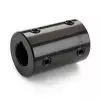

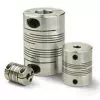
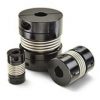
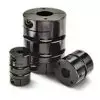
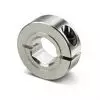
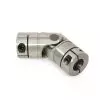
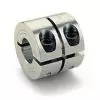 Short Rigid Couplings
Short Rigid Couplings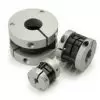 Controlflex Couplings
Controlflex Couplings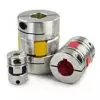 Jaw Couplings
Jaw Couplings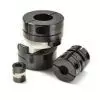 Oldham Couplings
Oldham Couplings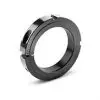 Bearing Locknuts – TCN
Bearing Locknuts – TCN Double Wide Shaft Collars
Double Wide Shaft Collars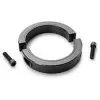 Heavy Duty Shaft Collars
Heavy Duty Shaft Collars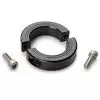 International Series Shaft Collars
International Series Shaft Collars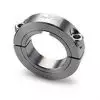 Keyed Shaft Collars
Keyed Shaft Collars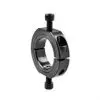 Mountable Shaft Collars
Mountable Shaft Collars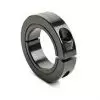 One-Piece Shaft Collars
One-Piece Shaft Collars Quick Clamping Shaft Collars
Quick Clamping Shaft Collars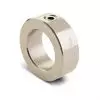 Set Screw Shaft Collars
Set Screw Shaft Collars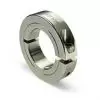 Thin Line Shaft Collars
Thin Line Shaft Collars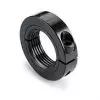 Threaded Shaft Collars – Pacific International Bearing Products
Threaded Shaft Collars – Pacific International Bearing Products Two-Piece Shaft Collars
Two-Piece Shaft Collars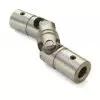 Friction Bearing Universal Joints
Friction Bearing Universal Joints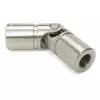 Needle Bearing Universal Joints
Needle Bearing Universal Joints